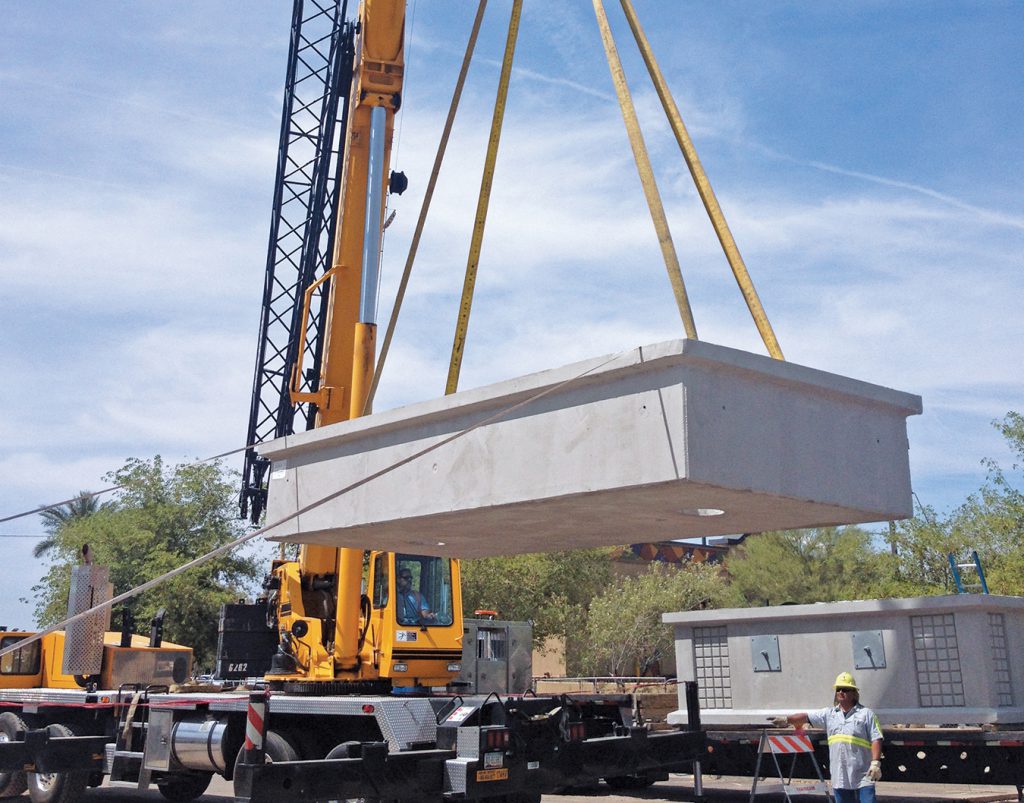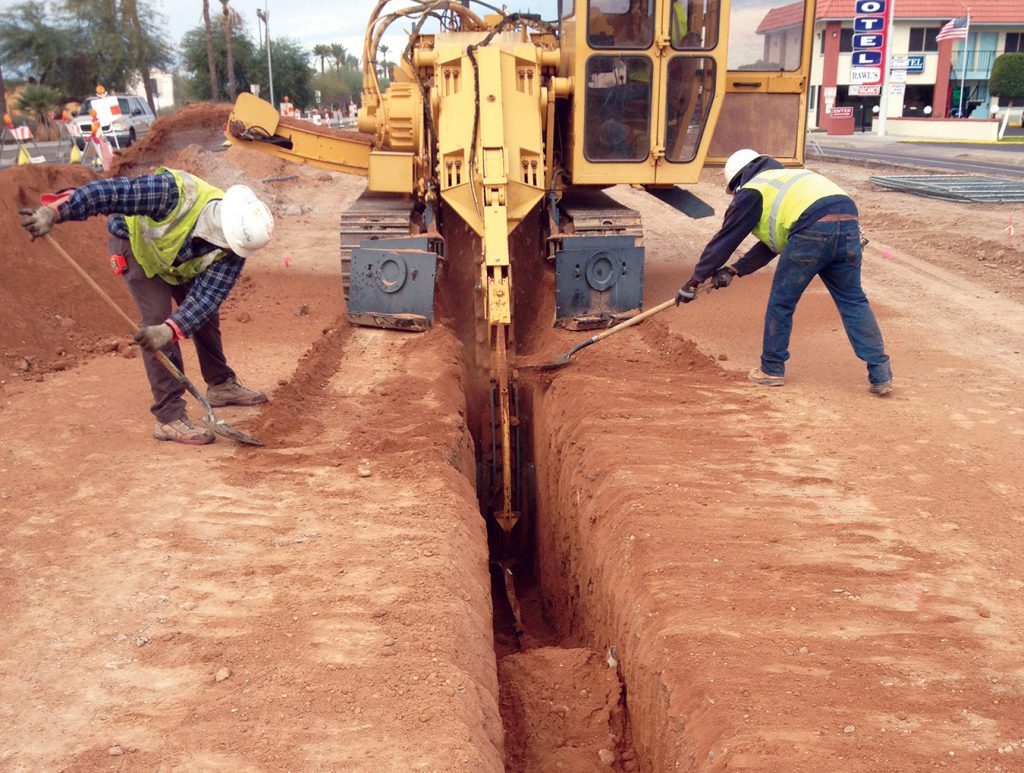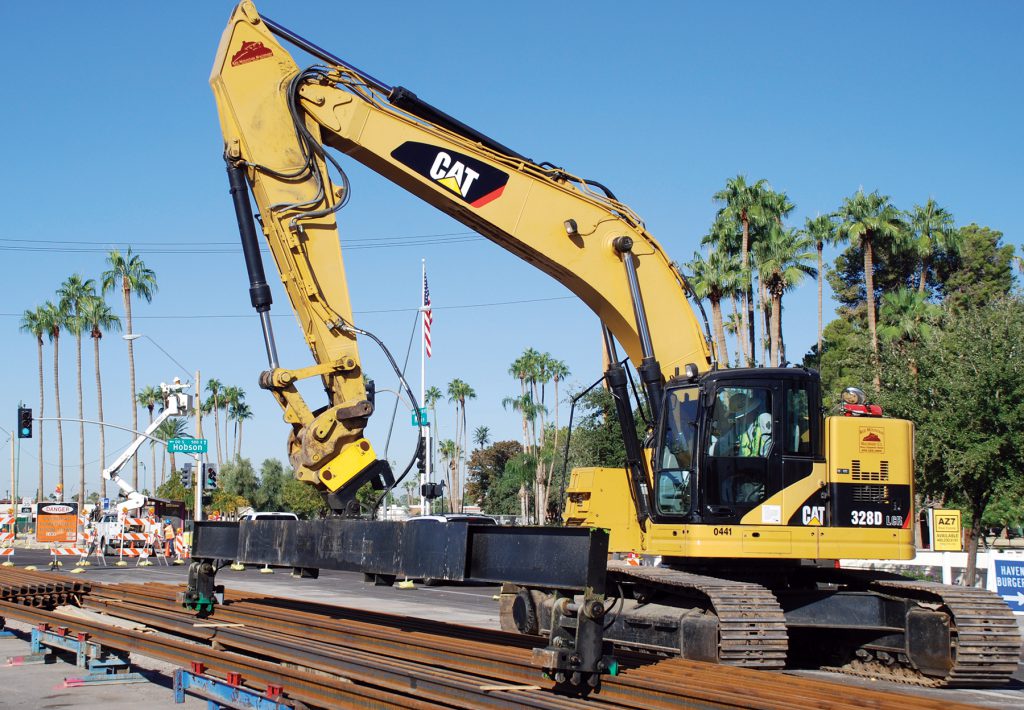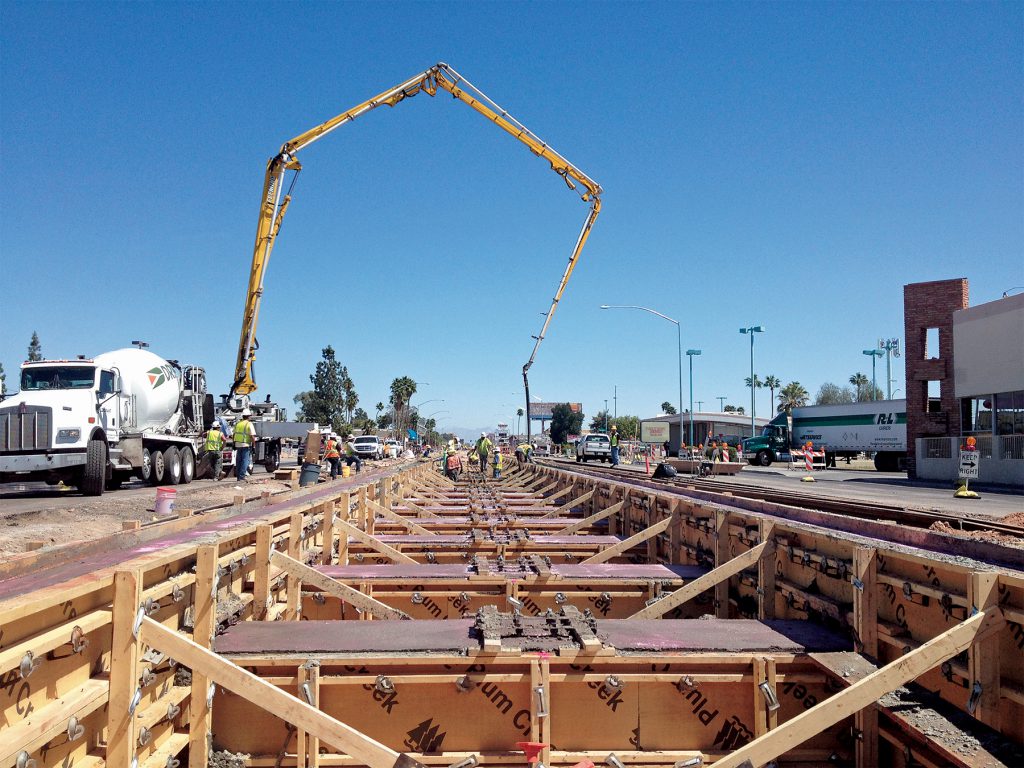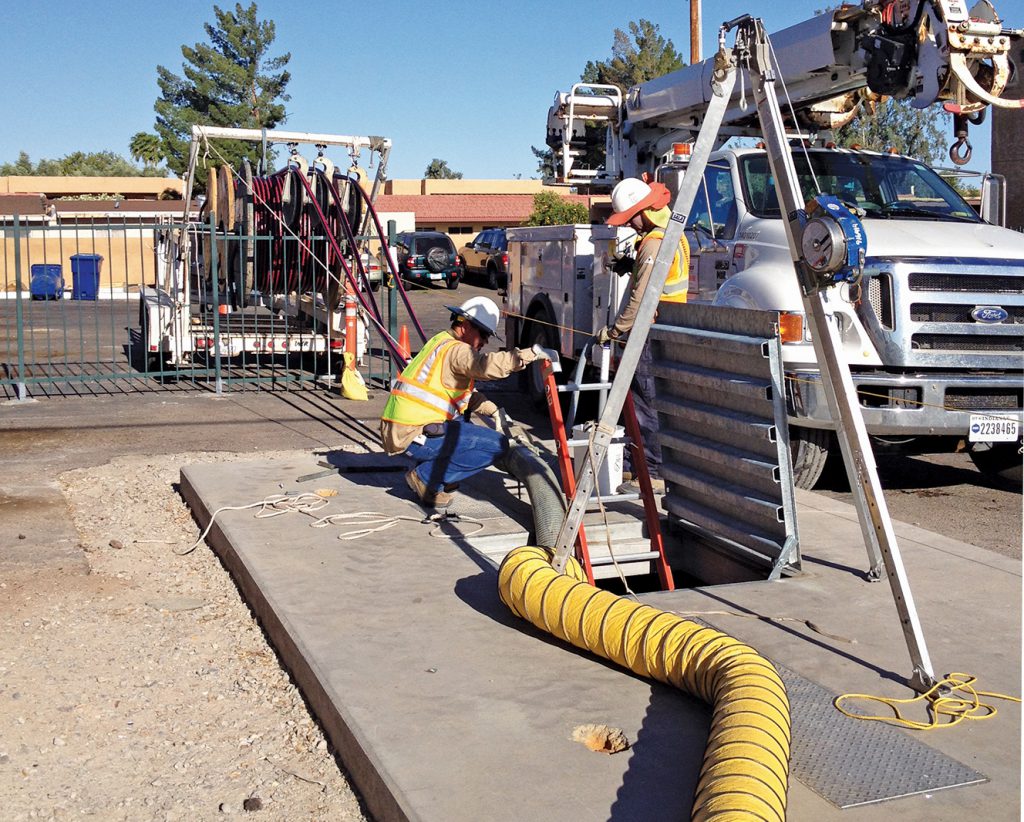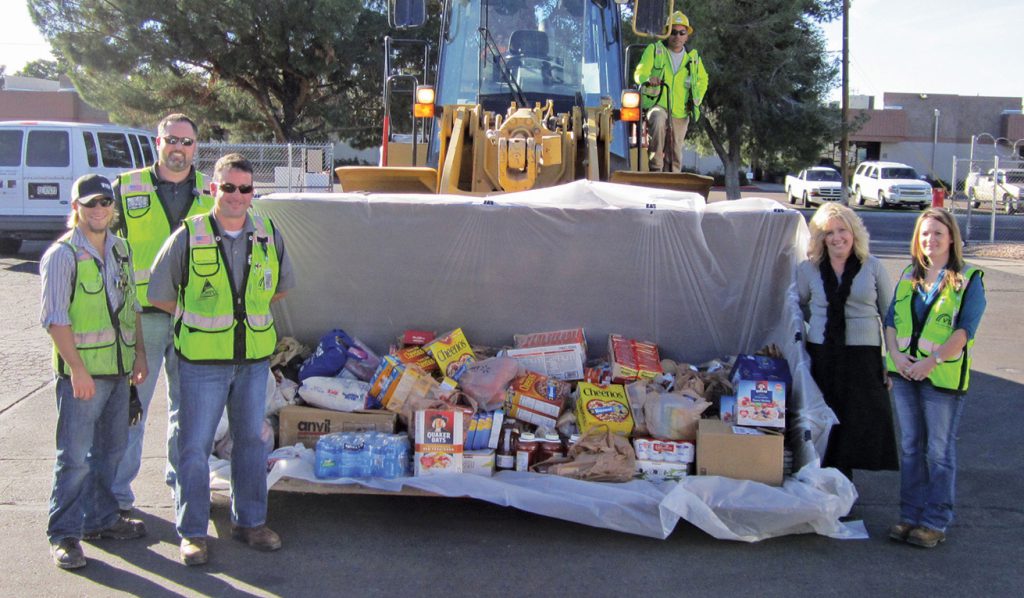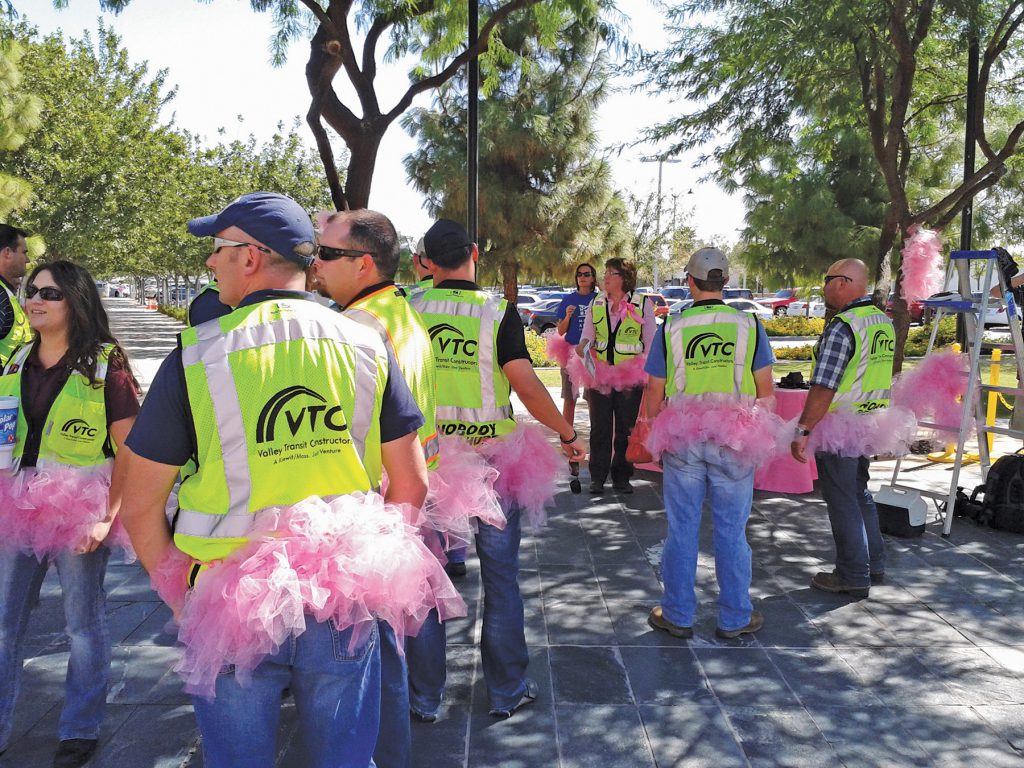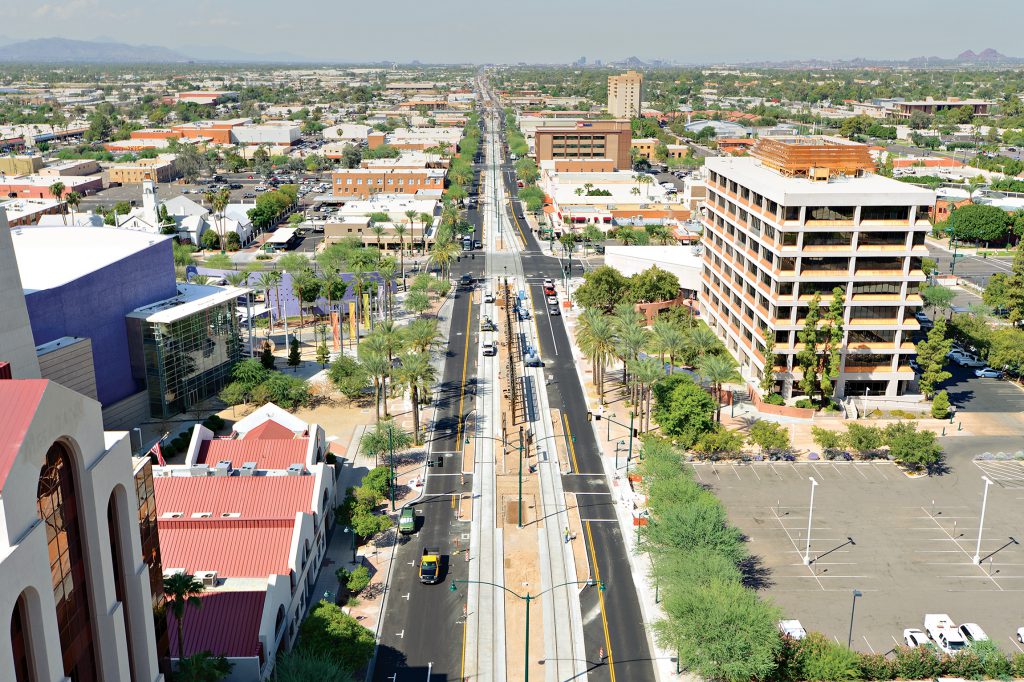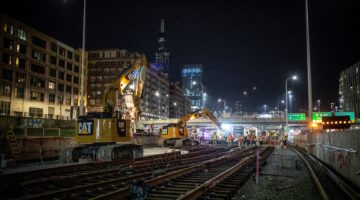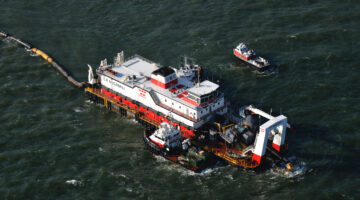Central Mesa Light Rail Extension is just one of the latest examples of Kiewit helping improve communities across the southwest.
The Grand Canyon. The NBA’s Phoenix Suns. John McCain. Walmart. Aside from the Grand Canyon – which the Colorado River has been carving for close to six million years – Kiewit has been a part of Arizona’s history longer than any of the above.
Kiewit’s first Arizona office opened in Phoenix in 1963.
Five years later, the Suns, the state’s first professional sports team, hit the hardwood. John McCain’s first term representing the great state of Arizona in U.S. Congress began in 1982. Walmart, now the state’s second largest employer, didn’t establish its first Arizona location until 25 years after Kiewit first opened its doors.
“From our first projects in the 1960s to now, we’ve always been working in our own backyard here in Arizona,” said Kiewit Senior Vice President Gene VanWagner, a Mesa, Ariz., resident.
In 2015, more than 50 years after Kiewit’s first Phoenix office opened, completion of Valley Metro’s Central Mesa Light Rail Extension draws near. It’s a project that’s both a result of and a catalyst to growth and changes in the area — changes Kiewit is familiar with as a local contractor and partner of the community.
Back to the urban core
Maricopa County, home to the Phoenix metro area, had fewer than 675,000 residents when Kiewit first arrived. Today, the area boasts a population of more than four million. With this growth, the county, like many across the country, experienced prolonged periods of urban sprawl.
But recently, locals and transplants have been heading back to urban areas in the Valley of the Sun. That trend is something life-long Phoenix resident Hillary Foose, director of communication and marketing at Valley Metro, the region’s transit agency, has noticed firsthand.
“I grew up in the downtown area and can remember when all would become quiet around 5 or 6 p.m. as employees left the office for the day,” Foose said. “Over the past several years we’ve seen a revitalization of this urban core. New businesses and entertainment are coming in that attract people to these areas not only to work, but to live.”
To keep up with and enhance the development of these urban areas, the first light rail project was commissioned in 2004. At 20 miles long, it was split into five contracts. In 2005, Kiewit was selected to build Line Section 1 (LS-1), a 2.27-mile stretch that included road re-construction, extensive underground utilities, three station platform foundations and the new concrete-embedded double track guideway.
Completed in 2008, the inaugural 20-mile line connects downtown Phoenix, downtown Tempe and west Mesa, and it’s had a major impact on the area’s economy.
“Since the line went in there’s been significant economic development from both the public and private sectors,” Foose said. “Total, it’s close to a $7 billion investment.”
The approximately 170 projects built along the light rail line in Phoenix, Tempe and Mesa since 2004 include nearly 3,500 new hotel rooms, more than 16,500 new residential units, more than 980,000 square feet of education space and 129 million square feet of new commercial space.
Extending the line
On the heels of the initial line’s completion came plans to extend light rail into Maricopa County’s other communities, this time east of Phoenix further into Mesa. Kiewit was once again selected as a contractor, operating as Valley Transit Constructors (VTC). VTC is a joint venture between Kiewit and Mass. Electric, a wholly-owned subsidiary of Kiewit.
The Central Mesa Light Rail Extension is a 3.1-mile addition with four stations and a park-and-ride, which provides free, security-monitored parking for those who commute to use light rail. The extension will directly connect downtown Mesa with the light rail line that already runs through downtown Phoenix and Tempe. This will bring easier access to urban centers and the businesses, as well as the neighborhoods and excitement that surround them.
The groundbreaking occurred in May 2012 and is set to be finished with the first passengers by November of this year, if not earlier. Valley Metro estimates it will add 5,000 new riders per day as it serves neighborhoods, the downtown business district, educational institutions, Mesa Arts Center and City Hall along the corridor. The extension picks up where the first line left off at the western edge of Mesa and goes right through the heart of the downtown district.
“Construction in a downtown area can be tough,” said VTC Project Manager Spencer Cruse. “Traffic congestion, access to local restaurants, shops and offices, as well as all of the events going on, have to be planned for when we’re scheduling work.”
“Eleven VTC staff employees were on LS-1 and 21 had previously worked on transit projects. That collective experience and knowledge is a huge asset on a project of this scale and complexity,” Cruse added.
Community ties
Being able to understand the community and its needs during construction was an important factor in Valley Metro’s decision to award the contract to VTC.
“In VTC, we have a partner that’s been embedded in the area for many years,” Foose said. “Kiewit’s work on LS-1 in the mid-2000s and other construction projects in the region certainly gave VTC credibility with us and community stakeholders.”
A major group of stakeholders are the visitors that arrive each winter from northern, colder climates to enjoy the warmth of Arizona. Valley Metro wanted to ensure that the historic downtown Mesa district remained accessible and vital during construction.
“We knew how important it was not to disrupt this part of town during the winter months,” Cruse said. “We worked aggressively in that area from May through September and shifted work to other segments from October through April to make the most of our schedule.”
Together, VTC and Valley Metro notify the public about such construction impacts as they occur. They partner to distribute the latest information to ensure the public is as well-informed as possible. Regular communication helps make construction of light rail, which can be a little unattractive, an easier process for the public to accept.
To ensure community outreach is successful, VTC is rated by a Community Advisory Board (CAB) each month. Board members include business owners, school principals and property owners, among others. The CAB lets VTC know what it’s doing well and how it can improve. A similar model is used in other cities on large public projects and was used on the initial 20-mile light rail line in the Phoenix metro area.
“The CAB is really the community’s voice as it relates to the project,” Foose said. “It’s able to provide VTC with insight from the public. At the same time, members of the board become more educated about the construction process and serve as advocates of the project.”
“Feedback is important to us,” Cruse said. “It helps us become better stewards of the community during construction. We’re proud of our ratings by the CAB and see it as a reflection of the quality of our work and outreach programs.”
That outreach is not just limited to construction activities. VTC also gets involved in community events such as food drives, blood drives and graffiti cover up.
“It’s comforting to know this project team is interested and invested in seeing a better Mesa,” Foose said. “They’re not transplants; this is their home.”
The end of the line?
As construction nears an end, Valley Metro, VTC, the City of Mesa and the community at large prepare for the final of six major milestones on the Central Mesa Light Rail Extension — project completion.
As with past milestones — including groundbreaking, first track laid and first station finished — project completion will be a celebration of the community with all project stakeholders.
“On a challenging project, we’ve had a supportive contractor that’s found creative ways to make construction easier on the public,” Foose said. “These milestones allow us to shine a light on the wins. It will be a thrill for us all to see the first vehicles roll through downtown Mesa.”
Cruse agrees.
“Completion is a proud moment as a project team and as people who call this region home, knowing we’re part of something that will be a positive addition to the area for years to come.”
And there will be plenty more projects in the future – maybe even another light rail extension.
“We’re moving quickly with light rail in the Valley,” Foose said. “We hope to keep our contractors busy in the coming years.”
